Ahyi (United States) | 28 May-3 June 2025 | Continuing Activity Cite this Report Cite this Report |
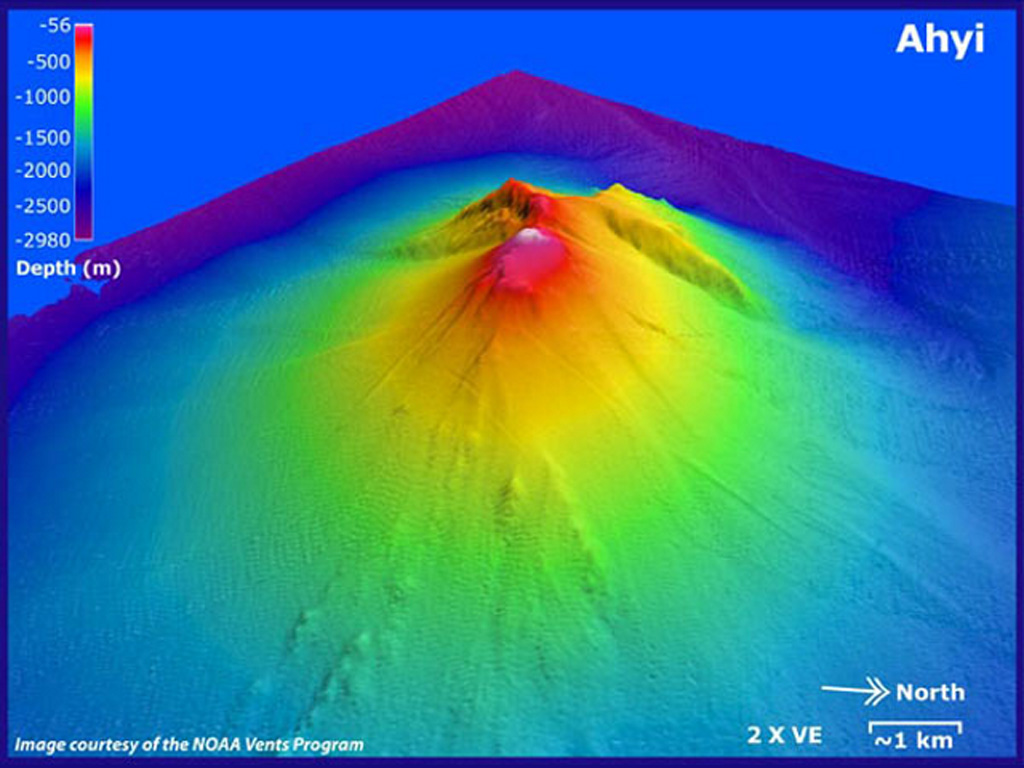 Ahyi Ahyi
Mariana Volcanic Arc
|
Unrest at Ahyi Seamount continued during 24-30 May. A small plume of discolored water in the vicinity of the seamount was identified in a satellite image on 28 May, indicating possible submarine activity. Possible infrasound signals coming from the direction of Ahyi were identified in data from underwater pressure sensors near Wake Island (about 2,270 km E) on 29 May. The Aviation Color Code remained at Yellow (the second lowest level on a four-color scale) and the Volcano Alert Level remained at Advisory (the second lowest level on a four-level scale).
Source: US Geological Survey
|
Aira (Japan) | 28 May-3 June 2025 | Continuing Activity Cite this Report Cite this Report |
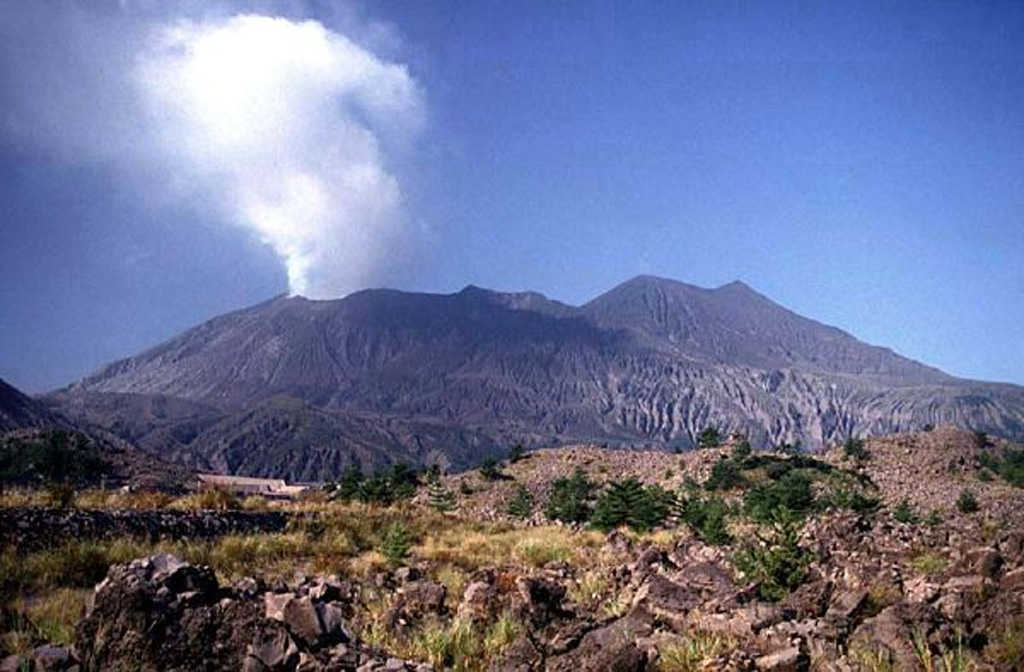 Aira Aira
Ryukyu Volcanic Arc
|
The Japan Meteorological Agency (JMA) reported ongoing eruptive activity at Minamidake Crater (Aira Caldera’s Sakurajima volcano) during 28 May-2 June. Very small eruptive events were recorded during 26-28 May. Sulfur dioxide emissions measured during a field survey on 28 May were extremely high, averaging 3,500 tons per day. An explosion at 1537 on 29 May produced an ash plume that rose 1.5 km above the crater rim, going into weather clouds, and ejected large blocks 700 m from the rim. Nighttime crater incandescence was visible during 30 May-2 June. Explosions at 1727 and 2058 on 30 May and at 1610 on 1 June generated ash plumes that rose 3-3.5 km above the crater rim and drifted S and SE and ejected large blocks as far as 1.1 km from the crater rim. An explosion at 2341 on 2 June ejected large blocks as far as 1 km from the crater rim; details about any emissions were unknown. The Alert Level remained at 3 (on a 5-level scale), and the public was warned to be cautious within 2 km of both the Minimadake and Showa craters.
Source: Japan Meteorological Agency (JMA)
|
Ambae (Vanuatu) | 28 May-3 June 2025 | Continuing Activity Cite this Report Cite this Report |
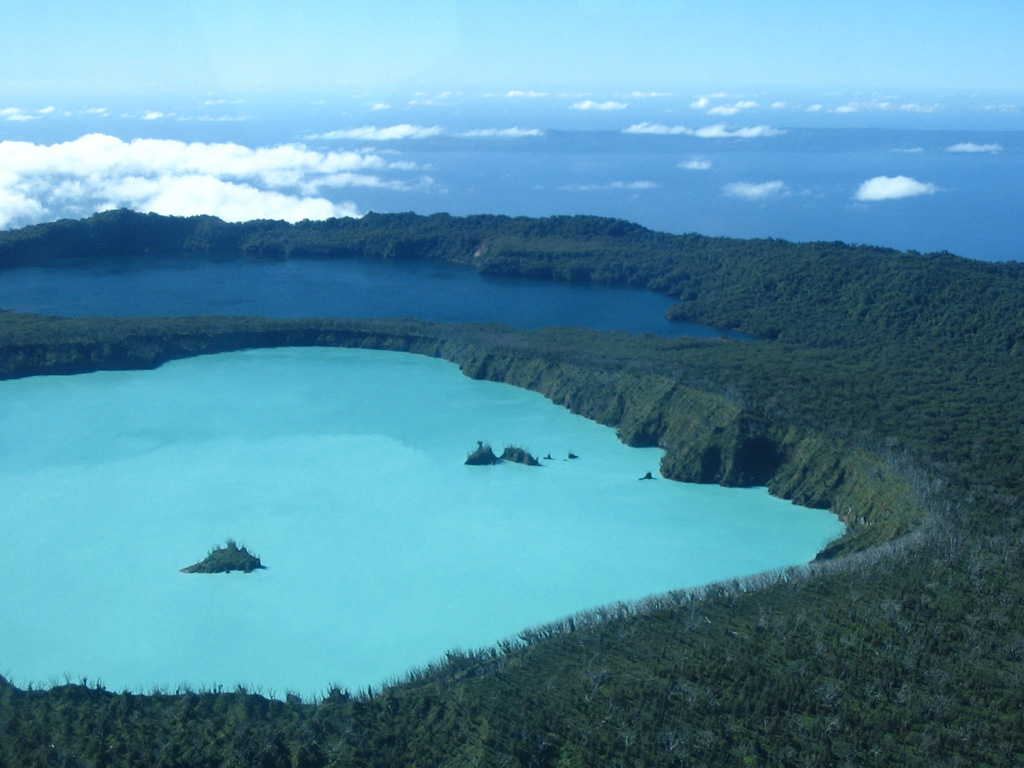 Ambae Ambae
Vanuatu Volcanic Arc
|
On 28 May the Vanuatu Meteorology and Geohazards Department (VMGD) reported ongoing unrest at Ambae during the month of May. Steam and/or gas emissions from the active vents were visible in webcam images on 1 May. That same day a thermal anomaly was identified in a satellite image. Sulfur dioxide emissions were detected in satellite data during 1-4, 8-21, and 24-26 May. Seismic data also confirmed ongoing unrest. The Alert Level remained at 2 (on a scale of 0-5), and the public was warned to stay outside of the Danger Zone, defined as a 2-km radius around the active vents in Lake Voui, and away from drainages during heavy rains.
Source: Vanuatu Meteorology and Geohazards Department (VMGD)
|
Ambrym (Vanuatu) | 28 May-3 June 2025 | Continuing Activity Cite this Report Cite this Report |
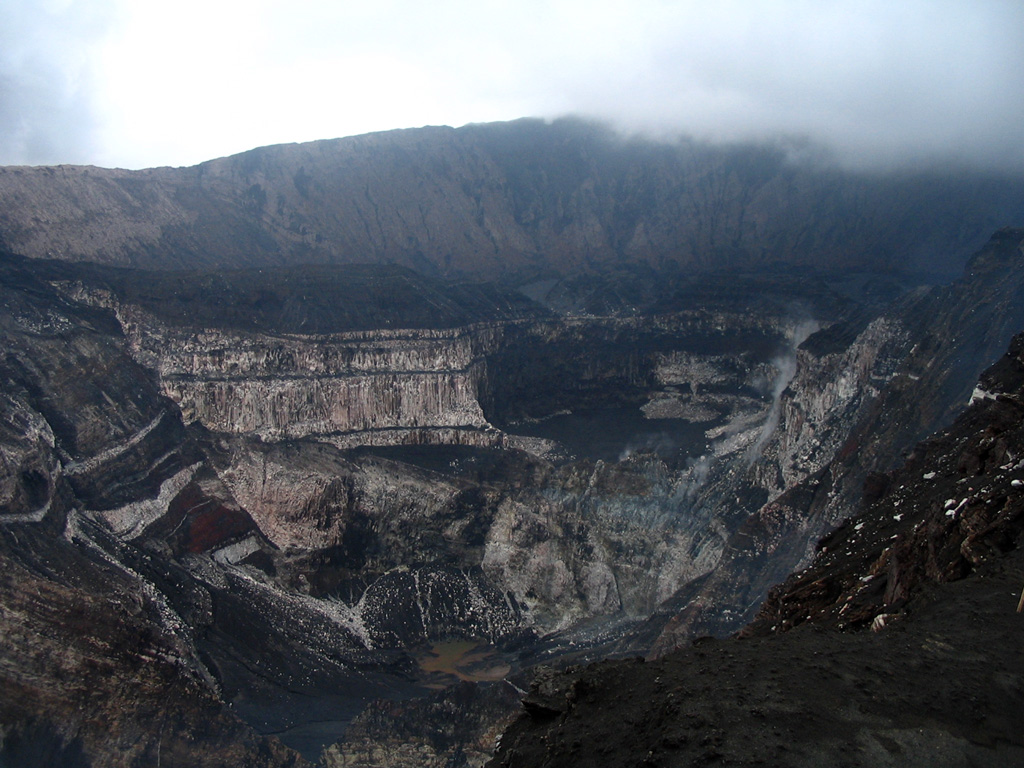 Ambrym Ambrym
Vanuatu Volcanic Arc
|
On 28 May the Vanuatu Meteorology and Geohazards Department (VMGD) reported ongoing unrest at Ambrym during the month of May. Webcam images recorded volcanic emissions rising from Benbow Crater on 9 May. Seismic data confirmed ongoing unrest. The Alert Level remained at 2 (on a scale of 0-5). VMGD warned the public to stay outside of Permanent Danger Zone A, defined as a 1-km radius around Benbow Crater and a 2-km radius around Marum Crater, and to stay 500 m away from the ground cracks created by the December 2018 eruption.
Source: Vanuatu Meteorology and Geohazards Department (VMGD)
|
Dukono (Indonesia) | 28 May-3 June 2025 | Continuing Activity Cite this Report Cite this Report |
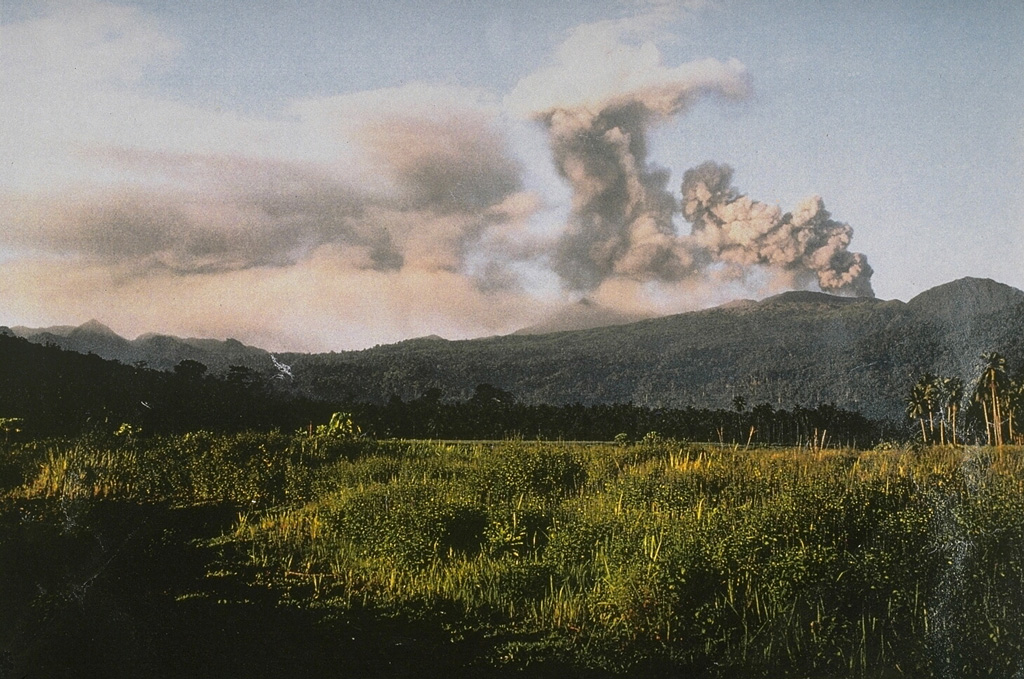 Dukono Dukono
Halmahera Volcanic Arc
|
The Pusat Vulkanologi dan Mitigasi Bencana Geologi (PVMBG) reported that eruptive activity at Dukono continued during 14-20 May. Daily white-and-gray or white, gray, and black gas-and-ash plumes rose 900-1,900 m above the summit and drifted NW, W, and S. The emissions were described as ongoing through the week. Residents 10-11 km away felt vibrations from the activity on 29 May and occasional banging sounds were heard at the same distances during 29-30 May. Faint rumbling was heard at the observation post, 11 km N, during 31 May-1 June. The Alert Level remained at Level 2 (on a scale of 1-4) and the public was warned to stay 4 km away from the Malupang Warirang Crater.
Source: Pusat Vulkanologi dan Mitigasi Bencana Geologi (PVMBG, also known as CVGHM)
|
Fuego (Guatemala) | 28 May-3 June 2025 | Continuing Activity Cite this Report Cite this Report |
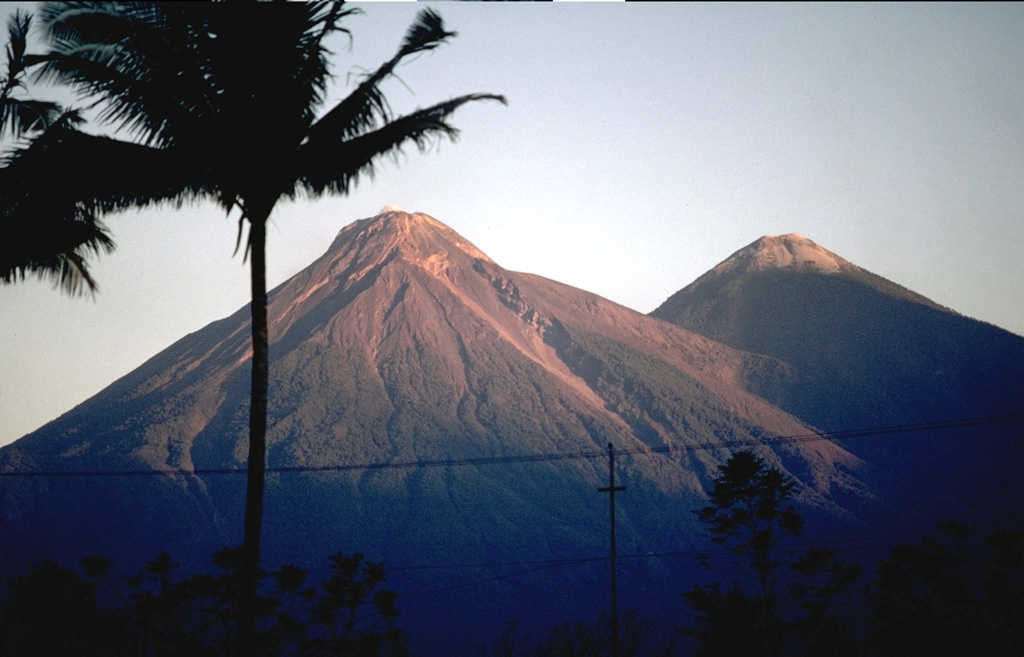 Fuego Fuego
Central America Volcanic Arc
|
The Instituto Nacional de Sismología, Vulcanologia, Meteorologia e Hidrología (INSIVUMEH) reported continued eruptive activity at Fuego during 27 May-3 June. Daily explosions were recorded by the seismic network at rates of 3-7 per hour when reported. The explosions generated daily gas-and-ash plumes that rose as high as 1.1 km above the summit and drifted as far as 30 km NW, W, and SW. Incandescent material was occasionally observed at night being ejected 100-150 m above the summit. Rumbling sounds and shock waves were occasionally reported. Explosions sometimes generated block avalanches that descended multiple flanks, sometimes reaching vegetated areas. Ashfall was reported in Panimache I and II (8 km SW), Morelia (10 km SW), Santa Sofia (12 km SW), El Porvenir (11 km SW), Finca la Asunción (12 km SW), and surrounding areas during 27-28 May and in areas downwind including Panimache I and II and Yepocapa (8 km WNW) during 1-2 June.
Source: Instituto Nacional de Sismologia, Vulcanologia, Meteorologia, e Hidrologia (INSIVUMEH)
|
Gaua (Vanuatu) | 28 May-3 June 2025 | Continuing Activity Cite this Report Cite this Report |
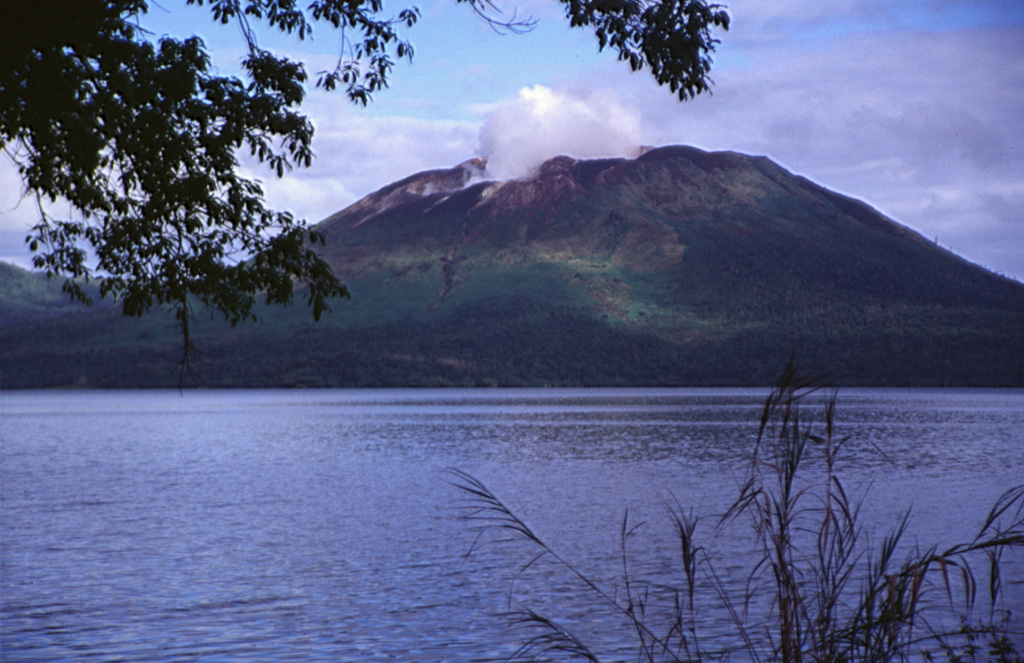 Gaua Gaua
Vanuatu Volcanic Arc
|
On 28 May the Vanuatu Meteorology and Geohazards (VMGD) reported that unrest continued at Gaua. Steam and/or gas emissions from the vent were visible in satellite images during the month; sulfur dioxide emissions were identified in images on 19 and 24 May. A moderate-level thermal anomaly was identified in a satellite image on 17 May, indicative of increased surface temperatures. The Alert Level remained at 2 (on a scale of 0-5) and the public was warned to stay away from the main cone.
Source: Vanuatu Meteorology and Geohazards Department (VMGD)
|
Great Sitkin (United States) | 28 May-3 June 2025 | Continuing Activity Cite this Report Cite this Report |
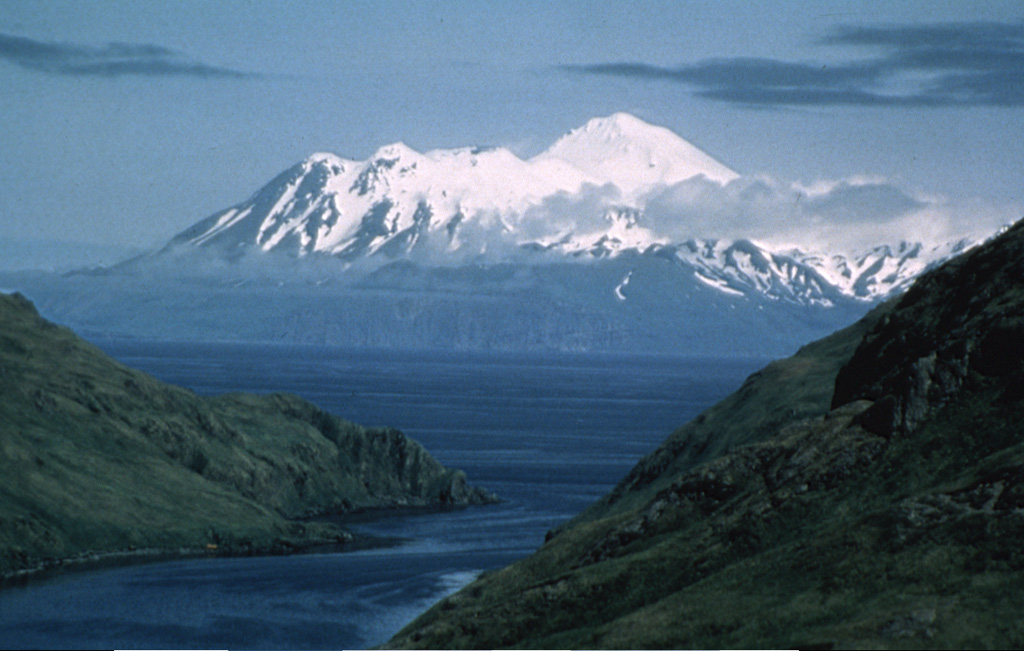 Great Sitkin Great Sitkin
Aleutian Ridge Volcanic Arc
|
The Alaska Volcano Observatory (AVO) reported that slow lava effusion continued to feed a thick flow in Great Sitkin’s summit crater during 28 May-3 June. Small daily earthquakes were detected by the seismic network. Weather clouds often obscured views of the volcano, though weakly elevated surface temperatures consistent with lava effusion were identified in satellite images on 29 May and 2 June and minor steaming was visible in satellite images on 30 May and 2 June. A 3 June radar image confirmed growth to the SE. The Volcano Alert Level remained at Watch (the third level on a four-level scale) and the Aviation Color Code remained at Orange (the third color on a four-color scale).
Source: US Geological Survey Alaska Volcano Observatory (AVO)
|
Ibu (Indonesia) | 28 May-3 June 2025 | Continuing Activity Cite this Report Cite this Report |
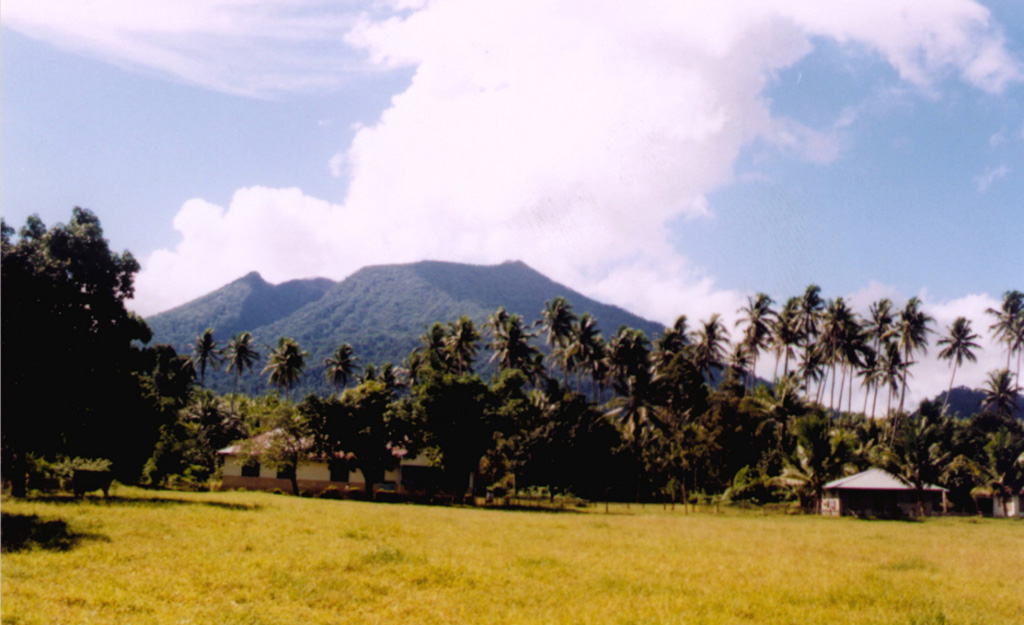 Ibu Ibu
Halmahera Volcanic Arc
|
The Pusat Vulkanologi dan Mitigasi Bencana Geologi (PVMBG) reported that the eruption at Ibu continued during 14-20 May. Daily gray or white-to-brown ash plumes rose as high as 1 km above the summit and drifted S, SW, NW, and NE. Nighttime crater incandescence was visible in some webcam images. The Alert Level remained at 3 (the second highest level on a four-level scale) and the public was advised to stay 4 km away from the active crater and 5 km away from the N crater wall opening.
Source: Pusat Vulkanologi dan Mitigasi Bencana Geologi (PVMBG, also known as CVGHM)
|
Kanlaon (Philippines) | 28 May-3 June 2025 | Continuing Activity Cite this Report Cite this Report |
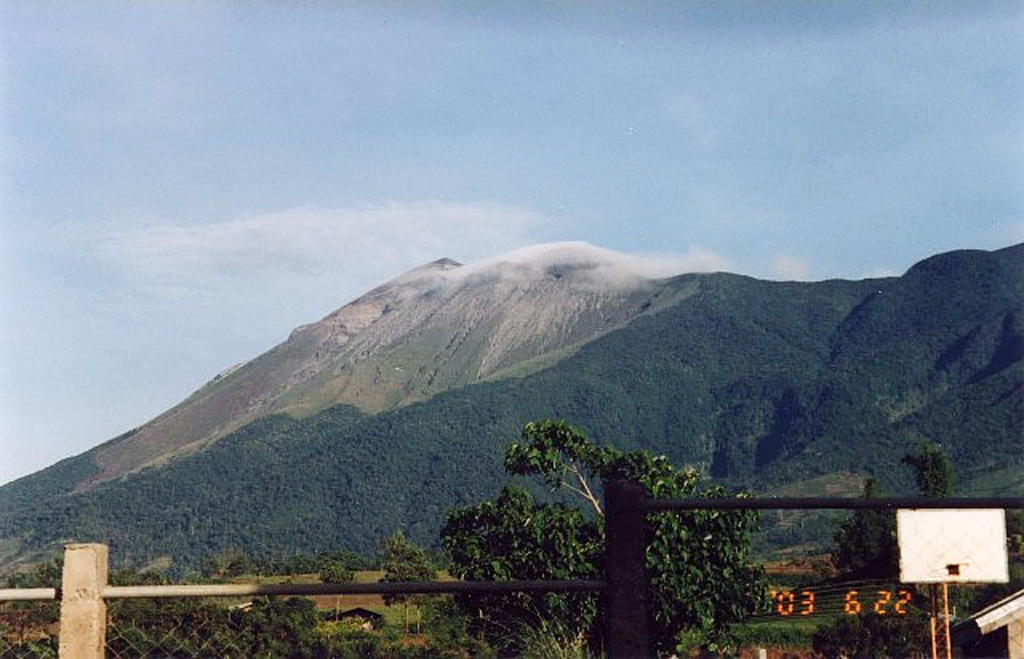 Kanlaon Kanlaon
Negros-Sulu Volcanic Arc
|
The Philippine Institute of Volcanology and Seismology (PHIVOLCS) reported continuing eruptive activity at Kanlaon during 27 May-3 June. The seismic network recorded 5-38 daily volcanic earthquakes. Daily sulfur dioxide emissions ranged from 300 to 1,844 tonnes per day. Gas-and-steam emissions of variable densities generally rose 75-750 m above the crater rim, though they reached 1.2 km on 2 June, and drifted SE, NE, NW, and SW. During 1338-1407 on 2 June a grayish ash plume rose 1.2 km above the summit and drifted W. The Alert Level remained at 3 (on a scale of 0-5); the public was warned to stay 6 km away from the summit and pilots were warned not to fly close to the volcano.
Source: Philippine Institute of Volcanology and Seismology (PHIVOLCS)
|
Karymsky (Russia) | 28 May-3 June 2025 | Continuing Activity Cite this Report Cite this Report |
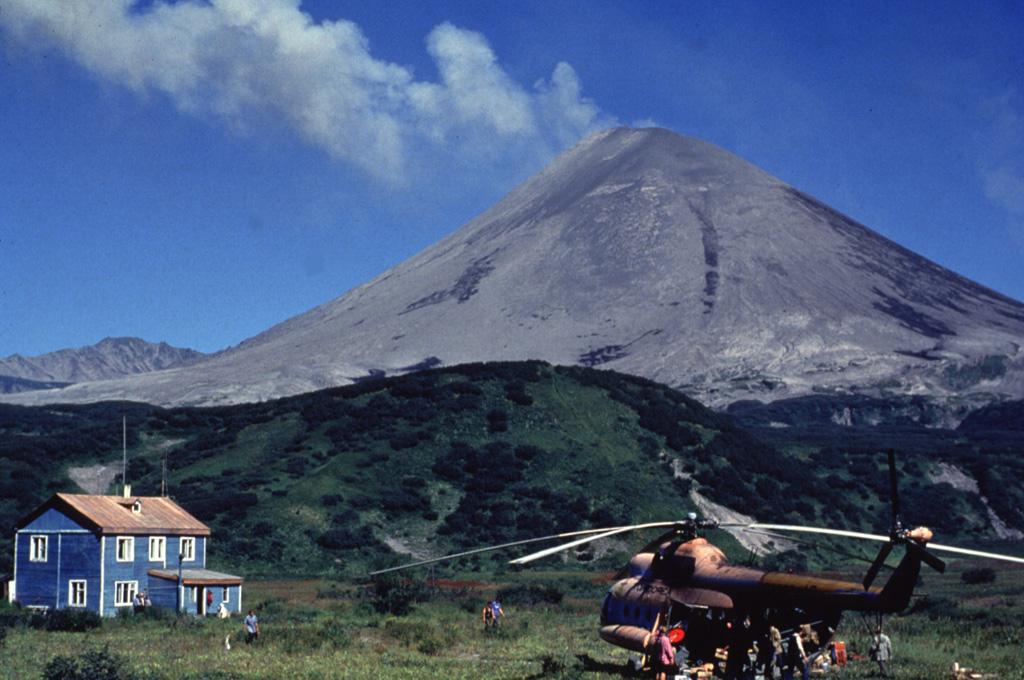 Karymsky Karymsky
Eastern Kamchatka Volcanic Arc
|
The Kamchatkan Volcanic Eruption Response Team (KVERT) reported that moderate activity continued at Karymsky during 23-29 May. A thermal anomaly over the volcano was identified in satellite images during 22, 25, and 27-28 May; weather clouds obscured views on other days. The Aviation Color Code remained at Orange (the third level on a four-color scale). Dates are based on UTC; specific events are in local time where noted.
Source: Kamchatkan Volcanic Eruption Response Team (KVERT)
|
Kilauea (United States) | 28 May-3 June 2025 | Continuing Activity Cite this Report Cite this Report |
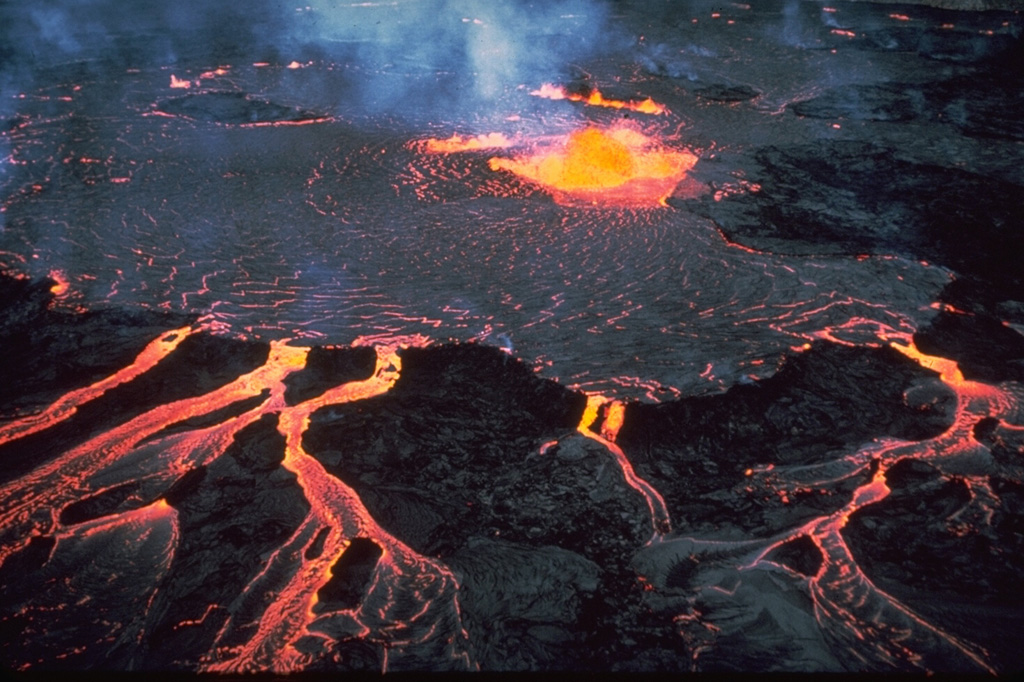 Kilauea Kilauea
Hawaiian-Emperor Hotspot Volcano Group
|
The Hawaiian Volcano Observatory (HVO) reported that the eruption within Kilauea’s Kaluapele summit caldera, characterized by episodic fountaining and intermittent spatter at two vents along the SW margin of Halema’uma’u Crater, continued at variable levels during 28 May-3 June. Night incandescence and occasional spattering was visible from both the N and S vents during the week, though the incandescence was stronger at the N vent. Gas emissions rose from both vents. Strands of Pele’s hair were present throughout the summit area of Hawai’i Volcanoes National Park and surrounding communities. The Volcano Alert Level remained at Watch (the third level on a four-level scale) and the Aviation Color Code remained at Orange (the third color on a four-color scale).
Source: US Geological Survey Hawaiian Volcano Observatory (HVO)
|
Lewotobi (Indonesia) | 28 May-3 June 2025 | Continuing Activity Cite this Report Cite this Report |
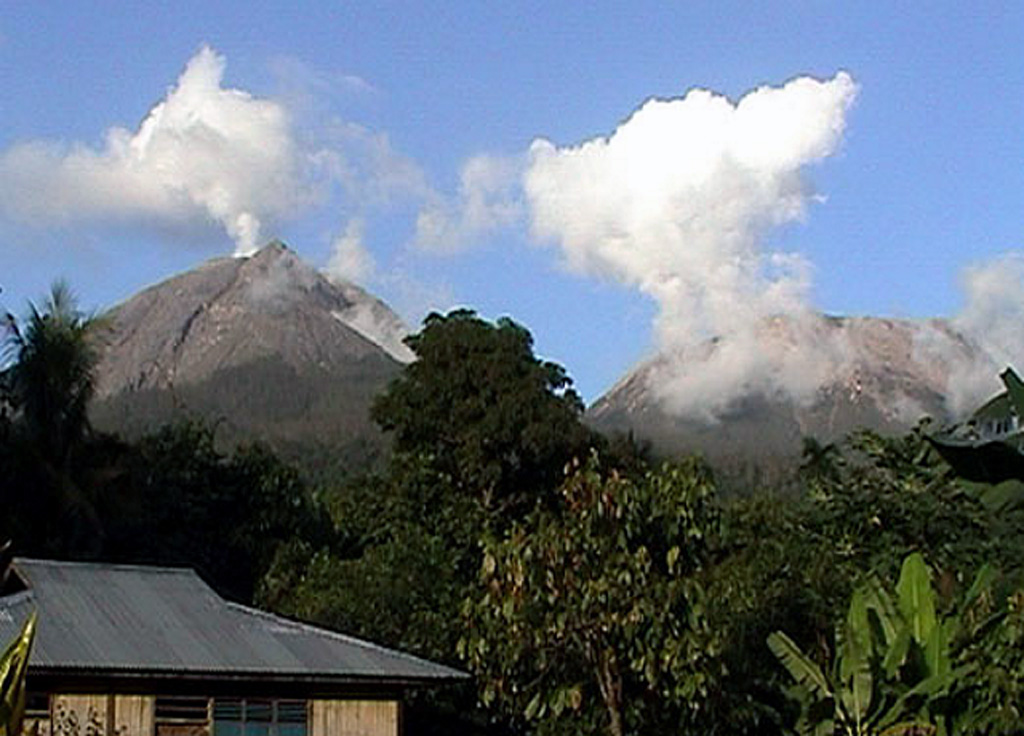 Lewotobi Lewotobi
Sunda Volcanic Arc
|
The Pusat Vulkanologi dan Mitigasi Bencana Geologi (PVMBG) reported that daily white steam-and-gas plumes rose as high as 1 km above the summit of Lewotobi Laki-laki during 28 May-3 June. The Alert Level remained at 3 (on a scale of 1-4) and the public was warned to stay 6 km away from the center of Laki-laki.
Source: Pusat Vulkanologi dan Mitigasi Bencana Geologi (PVMBG, also known as CVGHM)
|
Lewotolok (Indonesia) | 28 May-3 June 2025 | Continuing Activity Cite this Report Cite this Report |
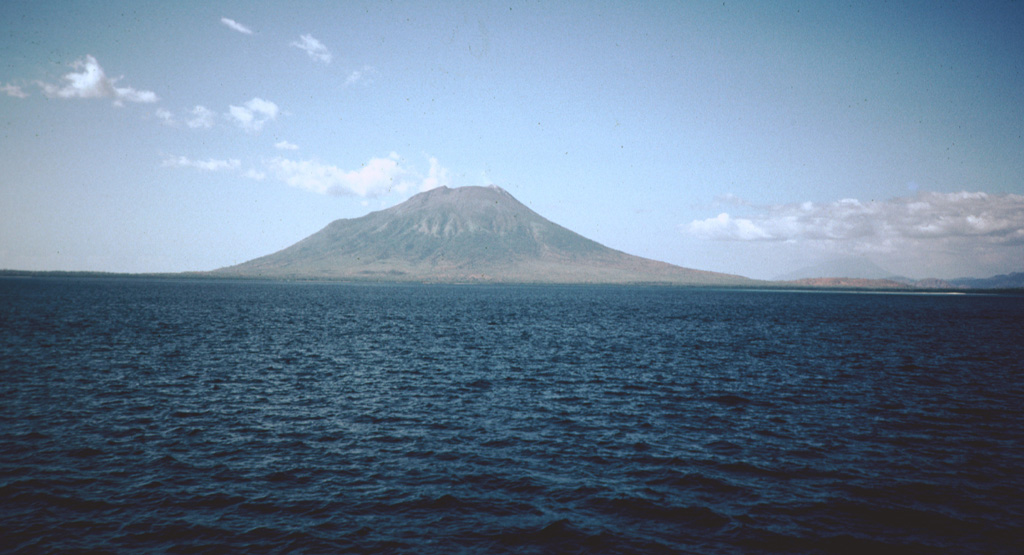 Lewotolok Lewotolok
Sunda Volcanic Arc
|
The Pusat Vulkanologi dan Mitigasi Bencana Geologi (PVMBG) reported that an eruption at Lewotolok was ongoing during 28 May-3 June. Daily gray or white-to-gray ash plumes rose as high as 1 km above the summit of the cone and drifted NW and W. Clear nighttime webcam images showed incandescent material at the summit cone, being ejected above the summit cone, and on the upper S flank. The Alert Level remained at 2 (on a scale of 1-4) and the public was warned to stay 2 km away from the vent and 2.5 km away on the S, SE, and W flanks.
Source: Pusat Vulkanologi dan Mitigasi Bencana Geologi (PVMBG, also known as CVGHM)
|
Lopevi (Vanuatu) | 28 May-3 June 2025 | Continuing Activity Cite this Report Cite this Report |
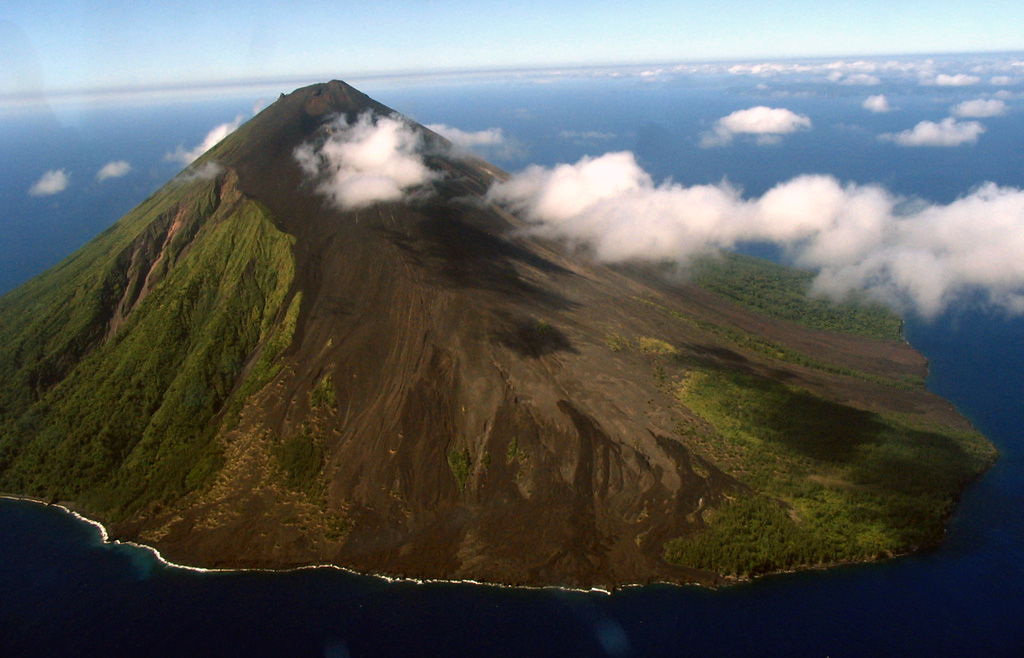 Lopevi Lopevi
Vanuatu Volcanic Arc
|
On 28 May the Vanuatu Meteorology and Geohazards Department (VMGD) reported that during the month seismic data confirmed continuing unrest at Lopevi. Small fumarolic steam plumes were continuously emitted from the summit crater based on a webcam image from 1 May. Low-level thermal anomalies were identified in satellite images on 1 and 20 May, indicative of increased surface temperatures. The Alert Level remained at 2 (on a scale of 0-4).
Source: Vanuatu Meteorology and Geohazards Department (VMGD)
|
Marapi (Indonesia) | 28 May-3 June 2025 | Continuing Activity Cite this Report Cite this Report |
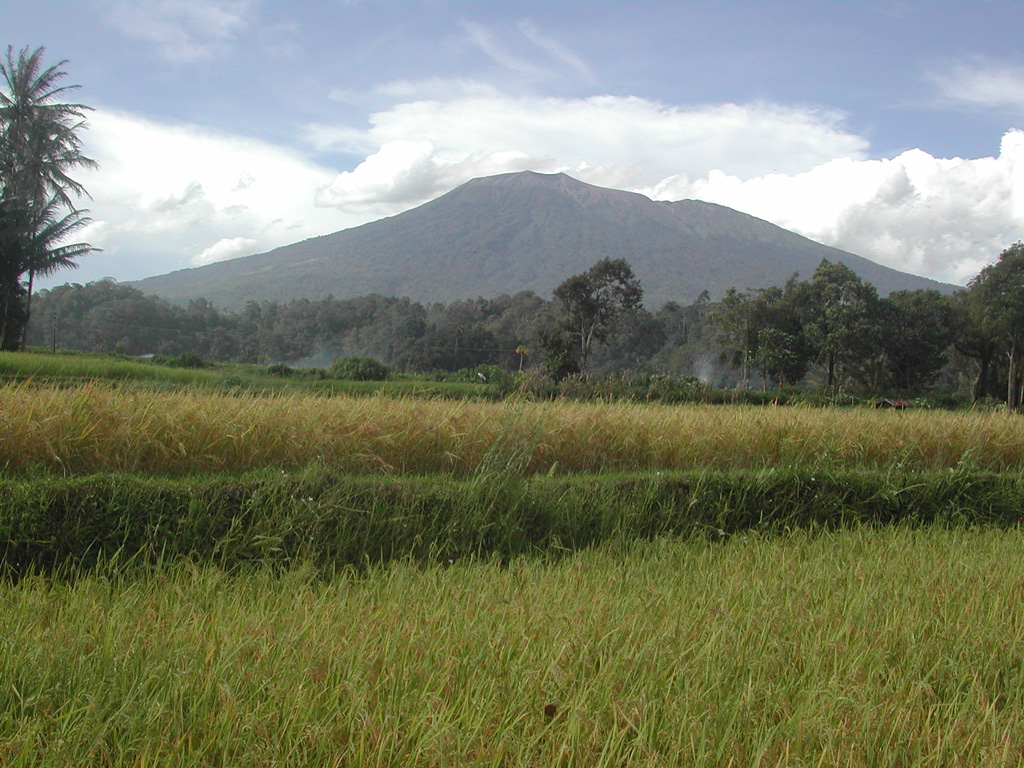 Marapi Marapi
Sunda Volcanic Arc
|
The Pusat Vulkanologi dan Mitigasi Bencana Geologi (PVMBG) reported that eruptive activity at Marapi (on Sumatra) continued during 28 May-3 June. White plumes rose 100-400 m above the summit and drifted in multiple directions on most days. An eruptive event at 2236 on 30 May was recorded by the seismic network, though a plume was not visible. White-and-gray plumes rose 150-300 m above the summit and drifted E and SE on 31 May. The Alert Level remained at 2 (on a scale of 1-4) and the public was warned to stay 3 km away from the active crater.
Source: Pusat Vulkanologi dan Mitigasi Bencana Geologi (PVMBG, also known as CVGHM)
|
Merapi (Indonesia) | 28 May-3 June 2025 | Continuing Activity Cite this Report Cite this Report |
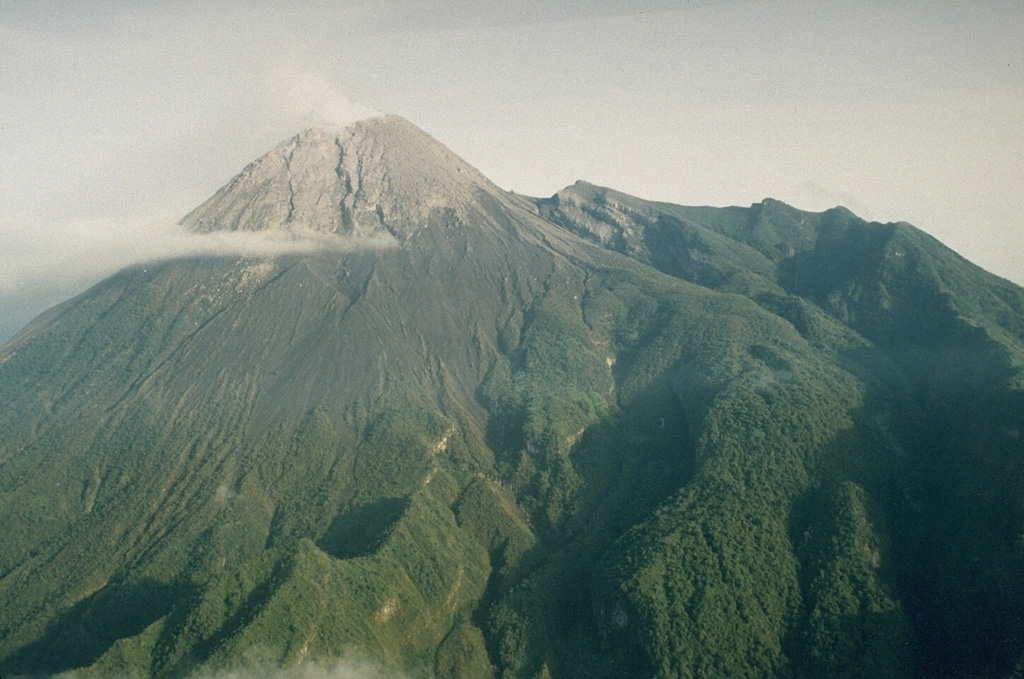 Merapi Merapi
Sunda Volcanic Arc
|
The Balai Penyelidikan dan Pengembangan Teknologi Kebencanaan Geologi (BPPTKG) reported that the eruption at Merapi (on Java) continued during 23-29 May. Seismicity remained at high levels. The SW lava dome produced 30 lava avalanches that traveled as far as 1.8 km SW down the Bebeng drainage, 12 that traveled as far as 1.8 km SW down the Krasak drainage, and 33 that traveled as far as 2 km W down the Sat/Putih drainage. Small morphological changes to the SW lava dome resulted from continuing effusion and minor collapses. The Alert Level remained at 3 (on a scale of 1-4), and the public was warned to stay 3-7 km away from the summit, based on location.
Source: Balai Penyelidikan dan Pengembangan Teknologi Kebencanaan Geologi (BPPTKG)
|
Poas (Costa Rica) | 28 May-3 June 2025 | Continuing Activity Cite this Report Cite this Report |
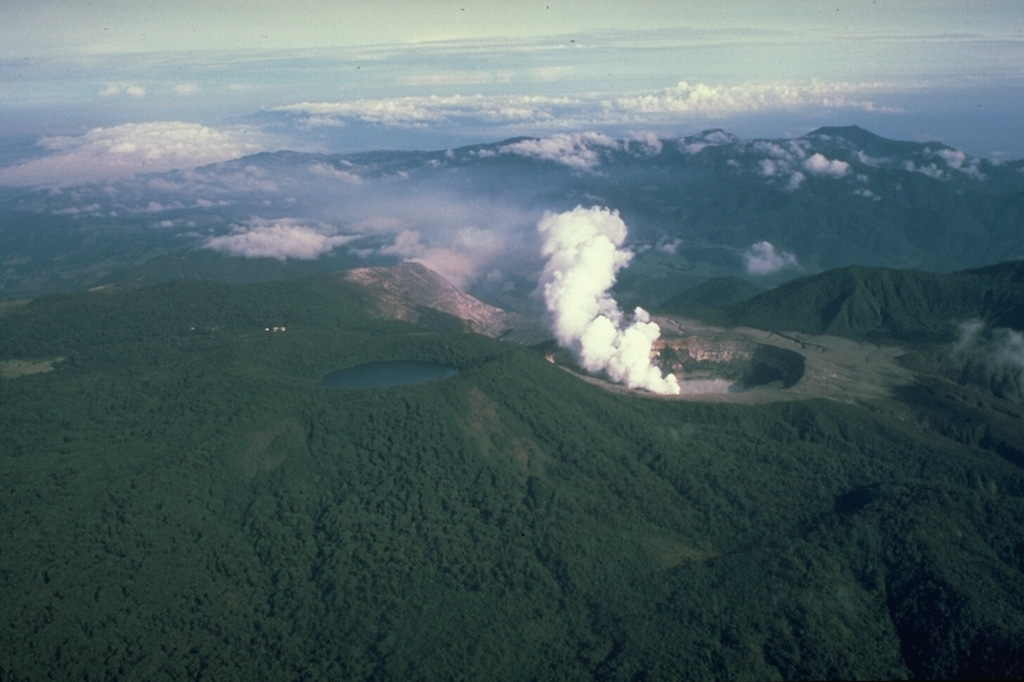 Poas Poas
Central America Volcanic Arc
|
The Observatorio Vulcanológico y Sismológico de Costa Rica-Universidad Nacional (OVSICORI-UNA) reported continuing gas-and-steam emissions at Poás during 28 May-3 June. Variable sulfur dioxide gas emissions were higher during the last week of May compared to the previous week, but not as high as peak emissions at the end of April. Incandescence continued to be visible and detected in infrared webcam views at Boca A vent. Minor inflation was detected on some days and no clear trend was apparent on others. At 1022 on 1 June a gas-and-steam plume with minor ash content rose 1 km and drifted W. Gas-and-steam emissions continued during 2-3 June; the plume was tinted blue due to a high concentration of sulfur dioxide gas. The volcano’s Alert Level remained at 3 (the second highest level on a four-level scale).
Source: Observatorio Vulcanologico y Sismologico de Costa Rica-Universidad Nacional (OVSICORI-UNA)
|
Popocatepetl (Mexico) | 28 May-3 June 2025 | Continuing Activity Cite this Report Cite this Report |
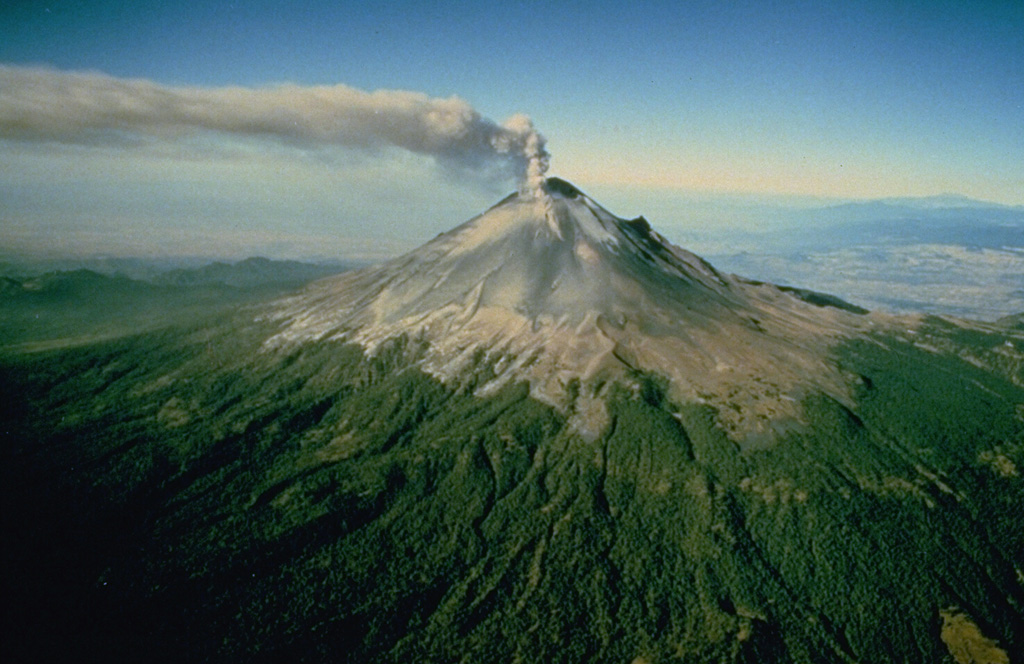 Popocatepetl Popocatepetl
Trans-Mexican Volcanic Arc
|
The Centro Nacional de Prevención de Desastres (CENAPRED) reported that eruptive activity continued at Popocatépetl during 27 May-3 June. The seismic network recorded 42-70 long-period events per day, accompanied by steam-and-gas emissions with occasional ash content. In addition, the seismic network recorded daily periods of tremor, sometimes characterized by harmonic and high-frequency signals, lasting from 41 minutes to three hours and 52 minutes. According to the Washington VAAC an ash plume was visible in webcam and satellite images at 1646 on 30 May rising 5.8 km (19,000 ft) a.s.l. (about 400 m above the crater rim) and drifting N. Steam-and-gas plumes with minor ash content were visible in webcam images on 2 June rising 5.8 km a.s.l. and drifting NW and SW. The Alert Level remained at Yellow, Phase Two (the middle level on a three-color scale) and the public was warned to stay 12 km away from the crater.
Sources: Centro Nacional de Prevencion de Desastres (CENAPRED), Washington Volcanic Ash Advisory Center (VAAC)
|
Rincon de la Vieja (Costa Rica) | 28 May-3 June 2025 | Continuing Activity Cite this Report Cite this Report |
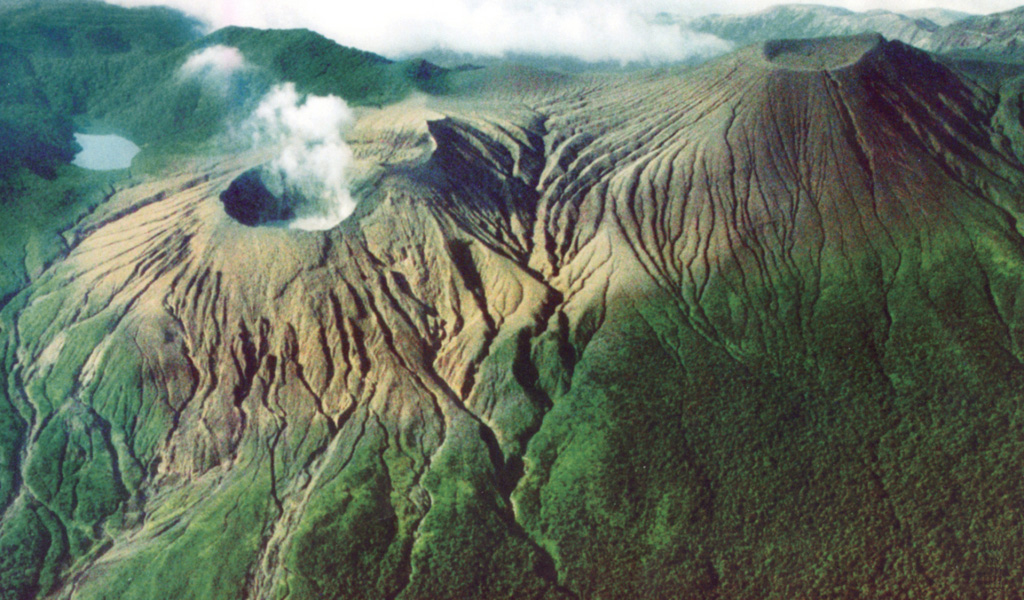 Rincon de la Vieja Rincon de la Vieja
Central America Volcanic Arc
|
The Observatorio Vulcanologico y Sismologico de Costa Rica-Universidad Nacional (OVSICORI-UNA) reported that occasional, small, phreatic eruptions at Rincón de la Vieja were recorded during 28 May-3 June. At 1546 on 31 May an explosive event recorded by the seismic network produced a white plume that rose 3 km above crater rim and drifted W. Two additional brief (around 1 minute long) phreatic events were recorded at 0642 on 1 June and at 0205 on 2 June. The first event generated a white plume with no ash that rose 1.5 km and drifted W; the plume from the second event was not visible. Sulfur dioxide emissions peaked near 1,000 tonnes per day in association with each of the three events.
Source: Observatorio Vulcanologico y Sismologico de Costa Rica-Universidad Nacional (OVSICORI-UNA)
|
Santa Maria (Guatemala) | 28 May-3 June 2025 | Continuing Activity Cite this Report Cite this Report |
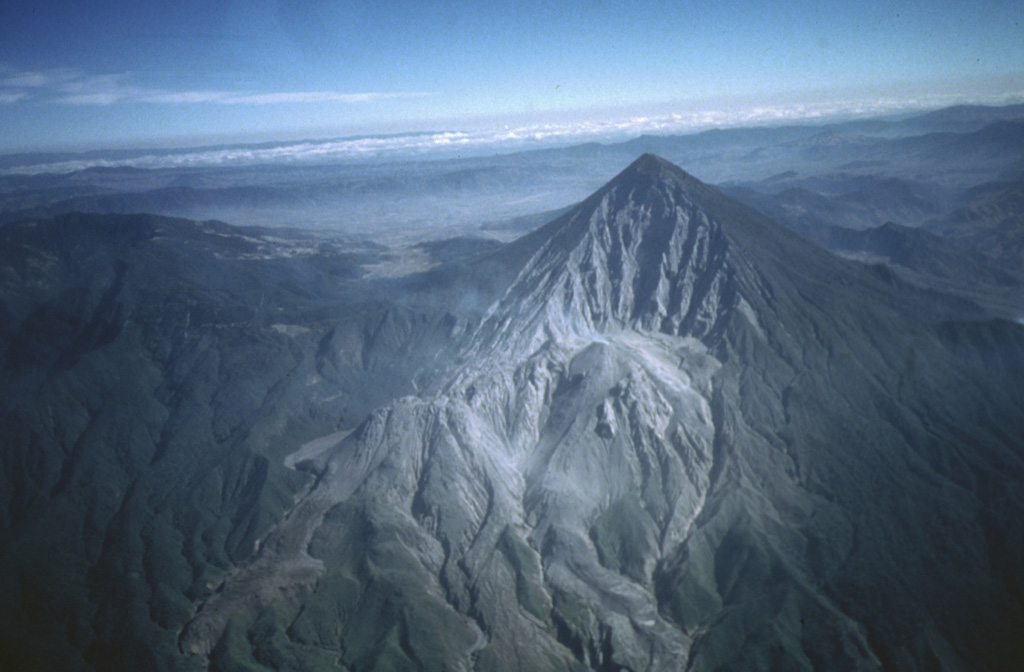 Santa Maria Santa Maria
Central America Volcanic Arc
|
The Instituto Nacional de Sismología, Vulcanología, Meteorología e Hidrología (INSIVUMEH) reported high levels of ongoing eruptive activity at Santa Maria’s Santiaguito dome complex during 27 May-3 June with continuing lava extrusion at Caliente dome. Daily weak and moderate explosions, as many as three per hour when reported, generated gas-and-ash plumes that rose as high as 1 km above the dome and drifted as far as 40 km in various directions. Effusion of blocky lava and collapses of material produced block avalanches that descended multiple flanks; the collapsed material sometimes produced short pyroclastic flows that reached the base of Caliente cone. Incandescence was visible at Caliente dome and upper part of the SW flank lava flow. Ashfall was reported in areas downwind including San Marcos (10 km SW), Loma Linda (7 km W), Palajunoj (17 km SSW), Finca Monte Bello (6 km WSW), and Monte María during 27-31 May.
Source: Instituto Nacional de Sismologia, Vulcanologia, Meteorologia, e Hidrologia (INSIVUMEH)
|
Semeru (Indonesia) | 28 May-3 June 2025 | Continuing Activity Cite this Report Cite this Report |
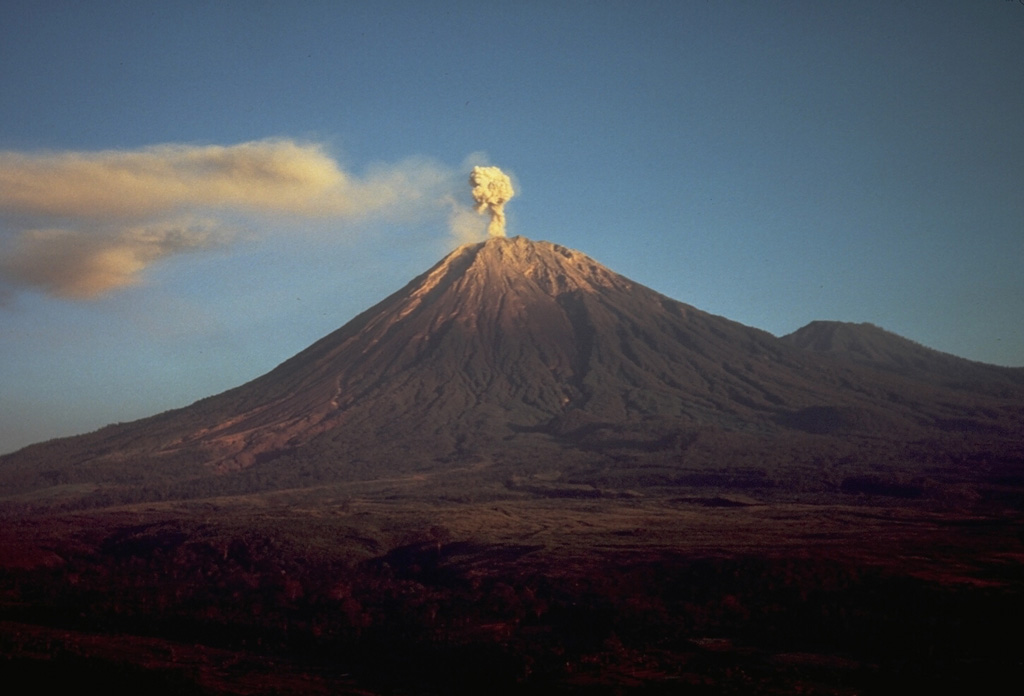 Semeru Semeru
Sunda Volcanic Arc
|
The Pusat Vulkanologi dan Mitigasi Bencana Geologi (PVMBG) reported that activity continued at Semeru during 21-27 May, with often multiple daily eruptive events recorded by the seismic network. White-and-gray ash plumes rose 400-1,200 m above the summit and drifted in multiple directions; no plumes were visible on 31 May. The Alert Level remained at 2 (the second lowest level on a scale of 1-4). The public was warned to stay at least 3 km away from the summit in all directions, 8 km from the summit to the SE, 500 m from the banks of the Kobokan drainage as far as 13 km from the summit, and to avoid other drainages including the Bang, Kembar, and Sat, due to lahar, avalanche, and pyroclastic flow hazards.
Source: Pusat Vulkanologi dan Mitigasi Bencana Geologi (PVMBG, also known as CVGHM)
|
Sheveluch (Russia) | 28 May-3 June 2025 | Continuing Activity Cite this Report Cite this Report |
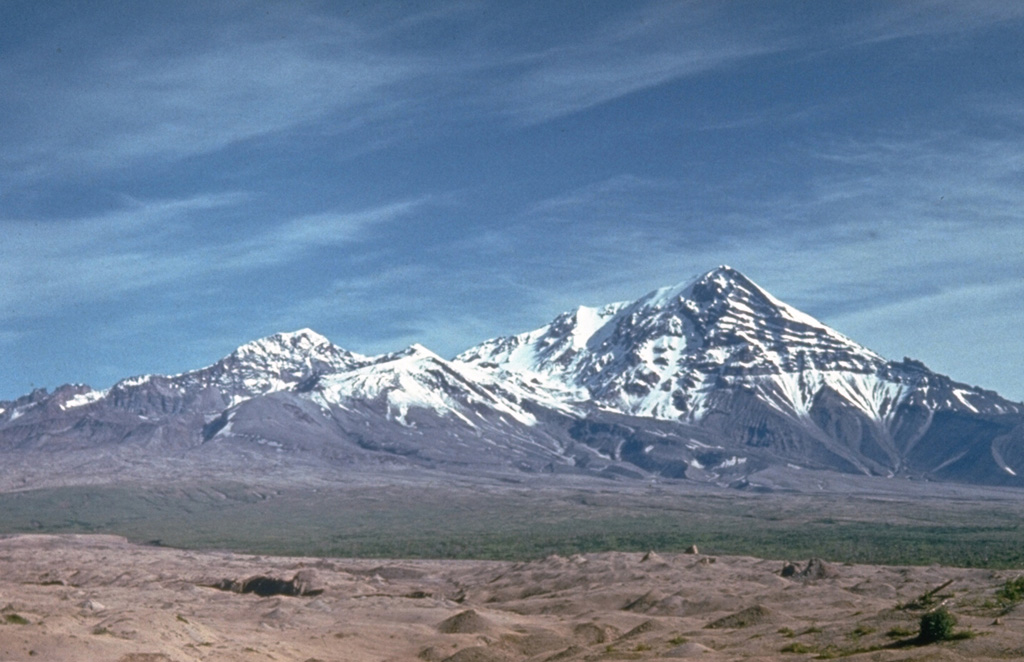 Sheveluch Sheveluch
Eastern Kamchatka Volcanic Arc
|
The Kamchatkan Volcanic Eruption Response Team (KVERT) reported that lava extrusion may have continued at Sheveluch’s “300 years of RAS” dome on the SW flank of Old Sheveluch and at the Young Sheveluch dome during 23-29 May. Thermal anomalies over the domes were identified almost daily in satellite images; weather clouds sometimes obscured views. The Far Eastern Branch of the Russian Academy of Sciences (FEB RAS) reported that minor ash plumes rising as high as 3 km (10,000 ft) a.s.l. drifted NW, W, SW, and SE during 23, 25-26, and 28-29 May. The Aviation Color Code remained at Orange (the second highest level on a four-color scale). Dates are based on UTC; specific events are in local time where noted.
Sources: Kamchatkan Volcanic Eruption Response Team (KVERT), Institute of Volcanology and Seismology (IVS) of the Far Eastern Branch of the Russian Academy of Sciences (FEB RAS)
|
Stromboli (Italy) | 28 May-3 June 2025 | Continuing Activity Cite this Report Cite this Report |
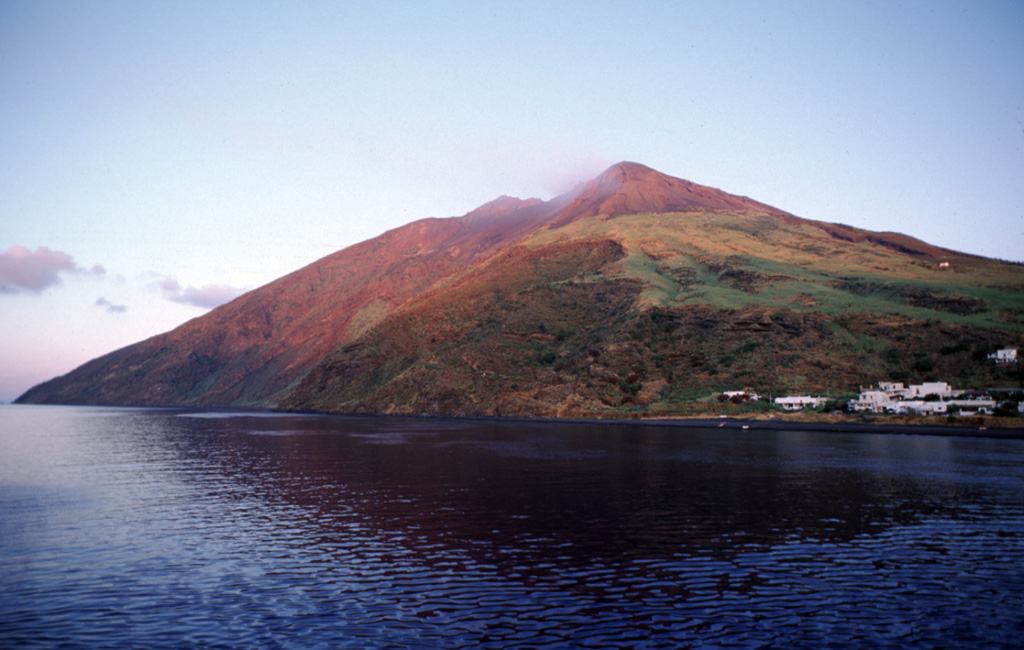 Stromboli Stromboli
Aeolian Volcanic Arc
|
The Sezione di Catania - Osservatorio Etneo (INGV) reported that eruptive activity continued at Stromboli during 26 May-1 June. Webcam images showed Strombolian activity at four vents in Area N within the upper part of the Sciara del Fuoco and from at least two vents in Area C-S (South-Central Crater) on the crater terrace. The vents in Area N continued to produce low- to medium-intensity explosions at a rate of 4-8 events per hour, ejecting lapilli and bombs less than 150 m above the vents. Low- to medium-intensity explosions at the vents in Area C-S ejected ash, bombs, and lapilli above the vent at a rate of 3-5 events per hour. The Alert Level remained at Yellow (the second lowest level on a four-level scale) according to the Dipartimento della Protezione Civile.
Sources: Sezione di Catania - Osservatorio Etneo (INGV), Dipartimento della Protezione Civile
|
Suwanosejima (Japan) | 28 May-3 June 2025 | Continuing Activity Cite this Report Cite this Report |
 Suwanosejima Suwanosejima
Ryukyu Volcanic Arc
|
The Japan Meteorological Agency (JMA) reported that eruptive activity at Suwanosejima's Ontake Crater continued during 26 May-2 June. Incandescence was observed nightly in webcam images. No explosions were detected, though plumes from eruptive events rose 600 m above the crater rim. Ashfall was reported by the Suwanosejima Branch of the Toshima Village Office (3.5 km SSW). The Alert Level remained at 2 (the second level on a five-level scale) and the public was warned to be cautious within 1.5 km of the crater.
Source: Japan Meteorological Agency (JMA)
|
Yasur (Vanuatu) | 28 May-3 June 2025 | Continuing Activity Cite this Report Cite this Report |
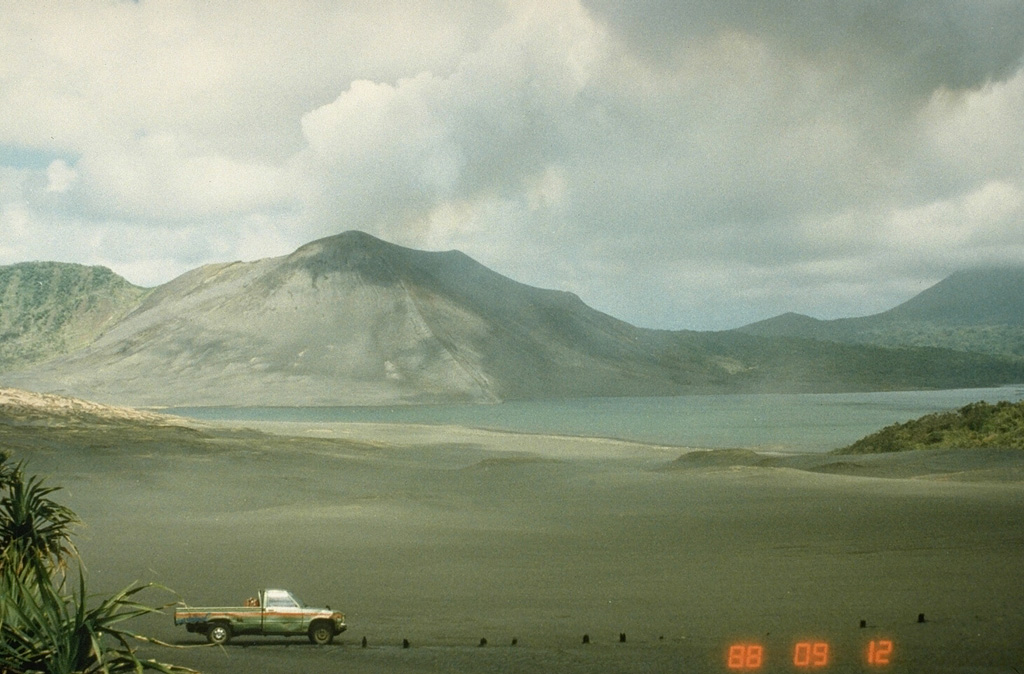 Yasur Yasur
Vanuatu Volcanic Arc
|
On 28 May the Vanuatu Meteorology and Geohazards Department (VMGD) reported that activity at Yasur continued at a level of “major unrest,” as defined by the Alert Level 2 status (on a scale of 0-5). Satellite and webcam images indicated that explosions continued, producing emissions of gas, steam, and/or ash. Sulfur dioxide gas emissions were identified in satellite images during 3, 5-7, 10, 13-16, 18-24, and 26 May, and low-level thermal anomalies were identified during 3, 5, 7, 13-14, and 26 May. Seismic data confirmed continuing volcanic activity with explosions that were occasionally strong. The report warned that ejected material from explosions could fall in and around the crater. The public was reminded to not enter the restricted area within 600 m around the boundaries of the Permanent Exclusion Zone, defined by Danger Zone A on the hazard map.
Source: Vanuatu Meteorology and Geohazards Department (VMGD)
|
Yellowstone (United States) | 28 May-3 June 2025 | Continuing Activity Cite this Report Cite this Report |
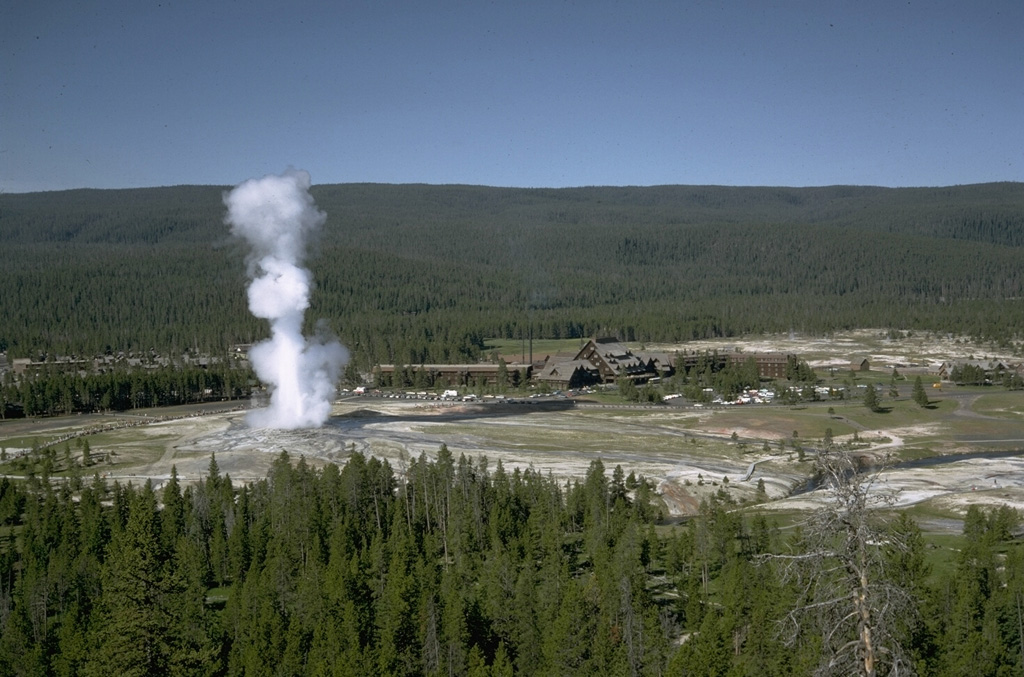 Yellowstone Yellowstone
Yellowstone-Snake River Hotspot Volcano Group
|
The Yellowstone Volcano Observatory (YVO) reported that a small hydrothermal explosion occurred at Black Diamond Pool, in Yellowstone’s Biscuit Basin thermal area, at 2039 on 31 May. An analysis of the periodic webcam images (taken every 15 minutes) revealed changes at the pool that same evening; the nature and timing of the changes was not reported. The event was the first at Black Diamond Pool that had been captured on video since the hydrothermal explosion on 23 July 2024, though there was evidence from other monitoring data and eyewitnesses that sporadic eruptions had occurred several times since that event. The Volcano Alert Level remained at Normal (the lowest level on a four-level scale) and the Aviation Color Code remained at Green (the lowest color on a four-color scale).
Source: Yellowstone Volcano Observatory (YVO)
|
![]() Download Smithsonian / USGS Weekly Volcanic Activity Report Network Link
Download Smithsonian / USGS Weekly Volcanic Activity Report Network Link
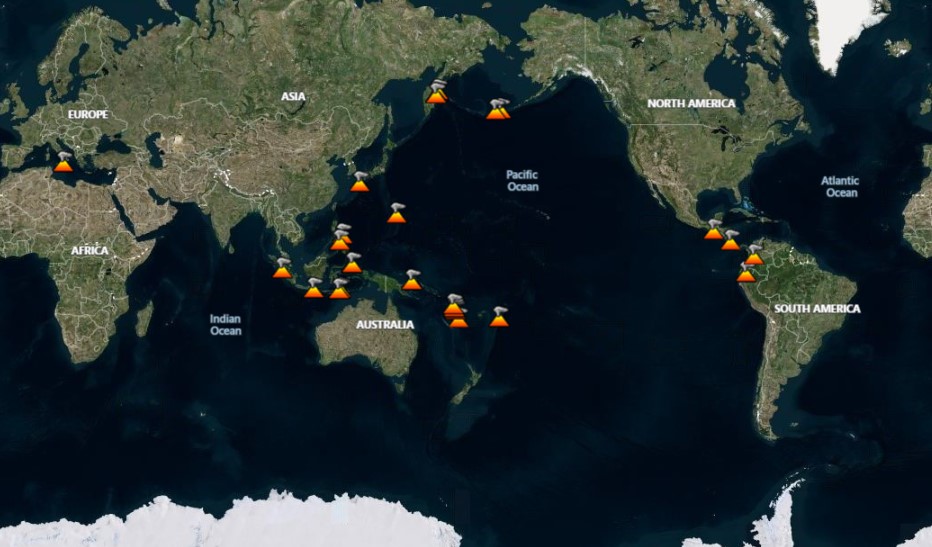
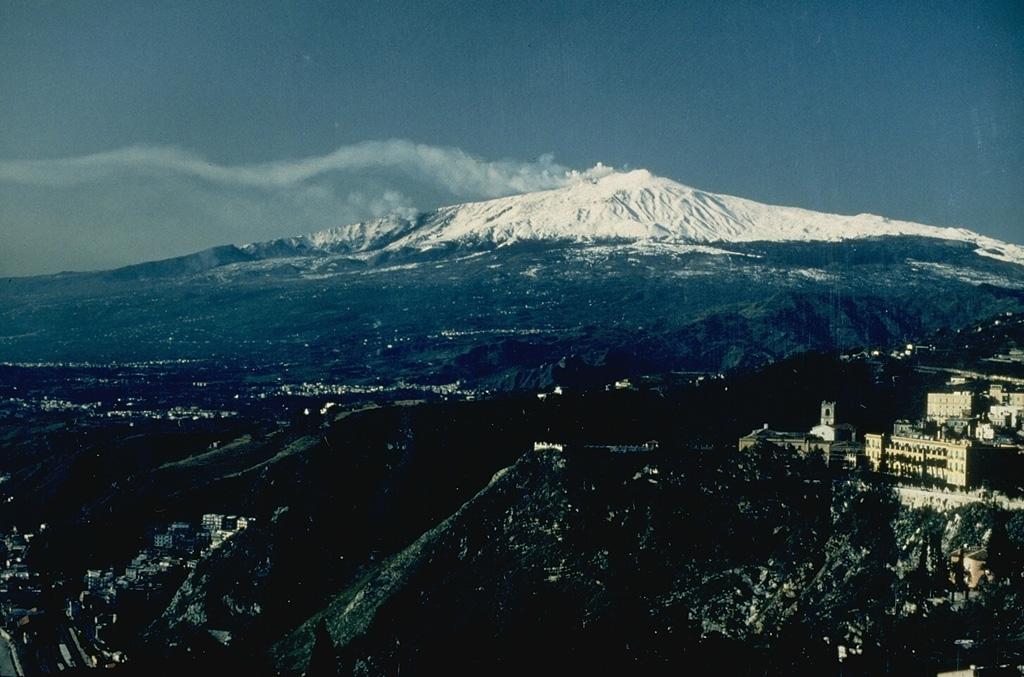 Etna
Etna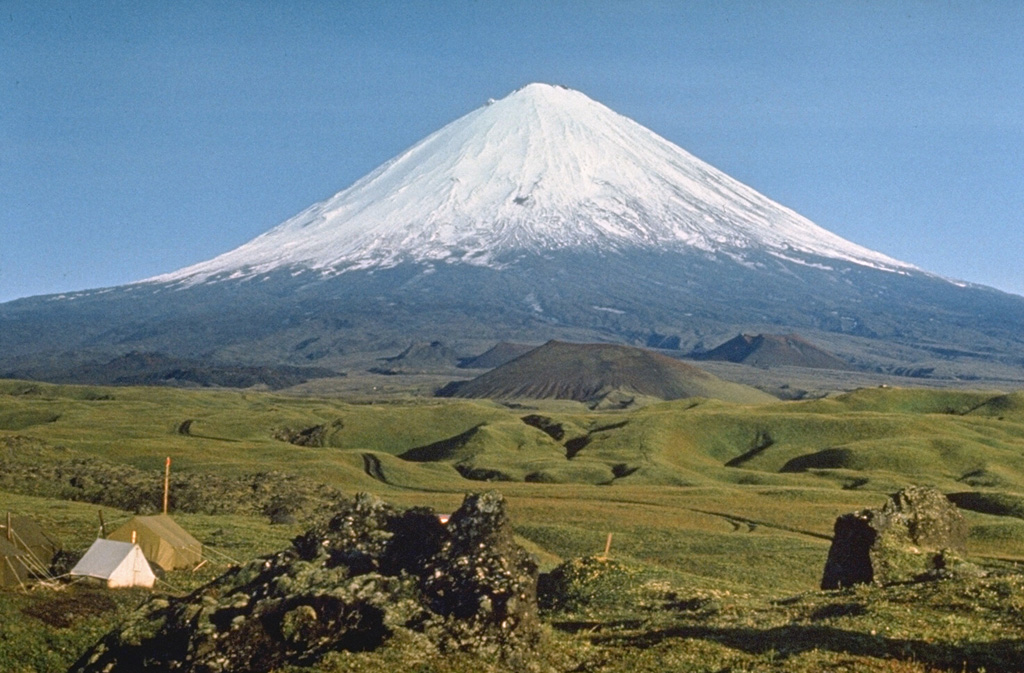 Klyuchevskoy
Klyuchevskoy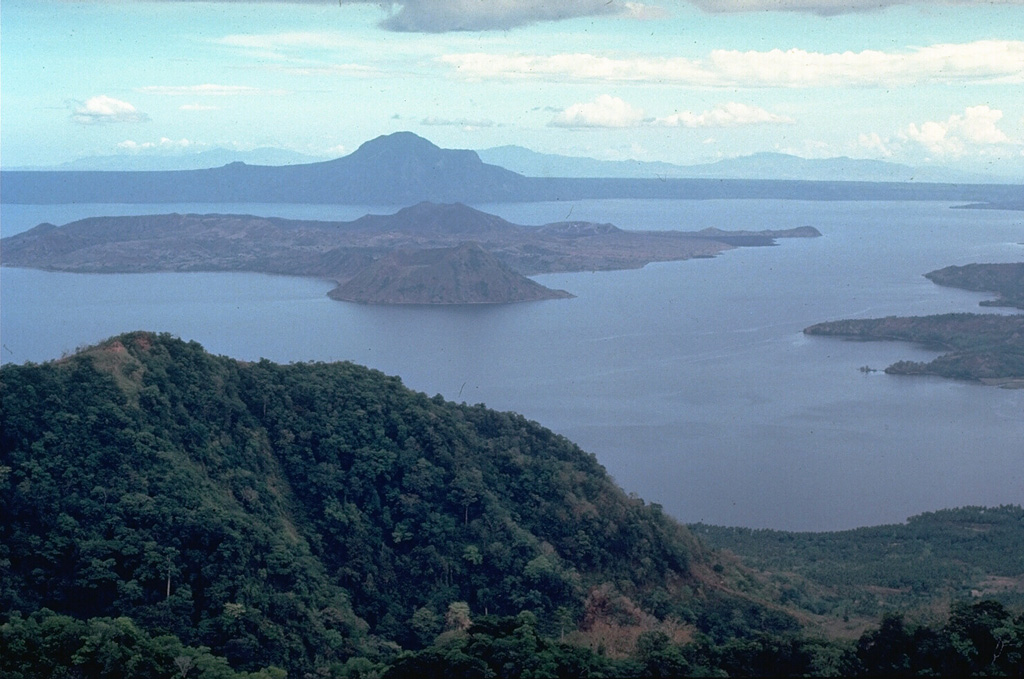 Taal
Taal Ahyi
Ahyi Aira
Aira Ambae
Ambae Ambrym
Ambrym Dukono
Dukono Fuego
Fuego Gaua
Gaua Great Sitkin
Great Sitkin Ibu
Ibu Kanlaon
Kanlaon Karymsky
Karymsky Kilauea
Kilauea Lewotobi
Lewotobi Lewotolok
Lewotolok Lopevi
Lopevi Marapi
Marapi Merapi
Merapi Poas
Poas Popocatepetl
Popocatepetl Rincon de la Vieja
Rincon de la Vieja Santa Maria
Santa Maria Semeru
Semeru Sheveluch
Sheveluch Stromboli
Stromboli Suwanosejima
Suwanosejima Yasur
Yasur Yellowstone
Yellowstone